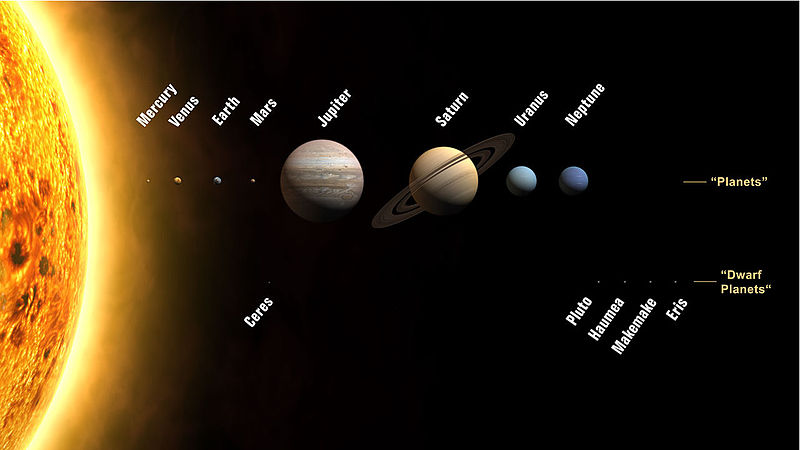 |
| The Solar System |
The Solar System is composed of 8 different planets, formerly 9, the 9th being Pluto, was exterminated as a planet because it could not fulfill the criteria of a planet and was regarded as a Dwarf planet.
The planets according to their arrangement are like this:
Why do the planets orbit around the sun???
The Sun is so huge that the whole of the Solar System is affected by the gravitational pull of the sun. The Sun keeps the planets in their places and they move around the Sun. Professor Albert Einstein showed this in a whole new concept through his 'General Theory of Relativity'. He said that in space, Time, the 4th dimension, combines with the other three dimensions creating layer of space and time which holds the objects. The heavier the objects, the deeper the layer goes creating a depression which ultimately makes the other objects move around just like the Sun.
Kepler's laws of planetary motion describe the orbits of objects about the Sun. According to Kepler's laws, each object travels along an ellipse with the Sun at one focus. Objects closer to the Sun (with smaller semi-major axes) travel more quickly, as they are more affected by the Sun's gravity. On an elliptical orbit, a body's distance from the Sun varies over the course of its year. A body's closest approach to the Sun is called its perihelion, while its most distant point from the Sun is called its aphelion. The orbits of the planets are nearly circular, but many comets, asteroids and Kuiper belt objects follow highly elliptical orbits.









0 comments:
Post a Comment